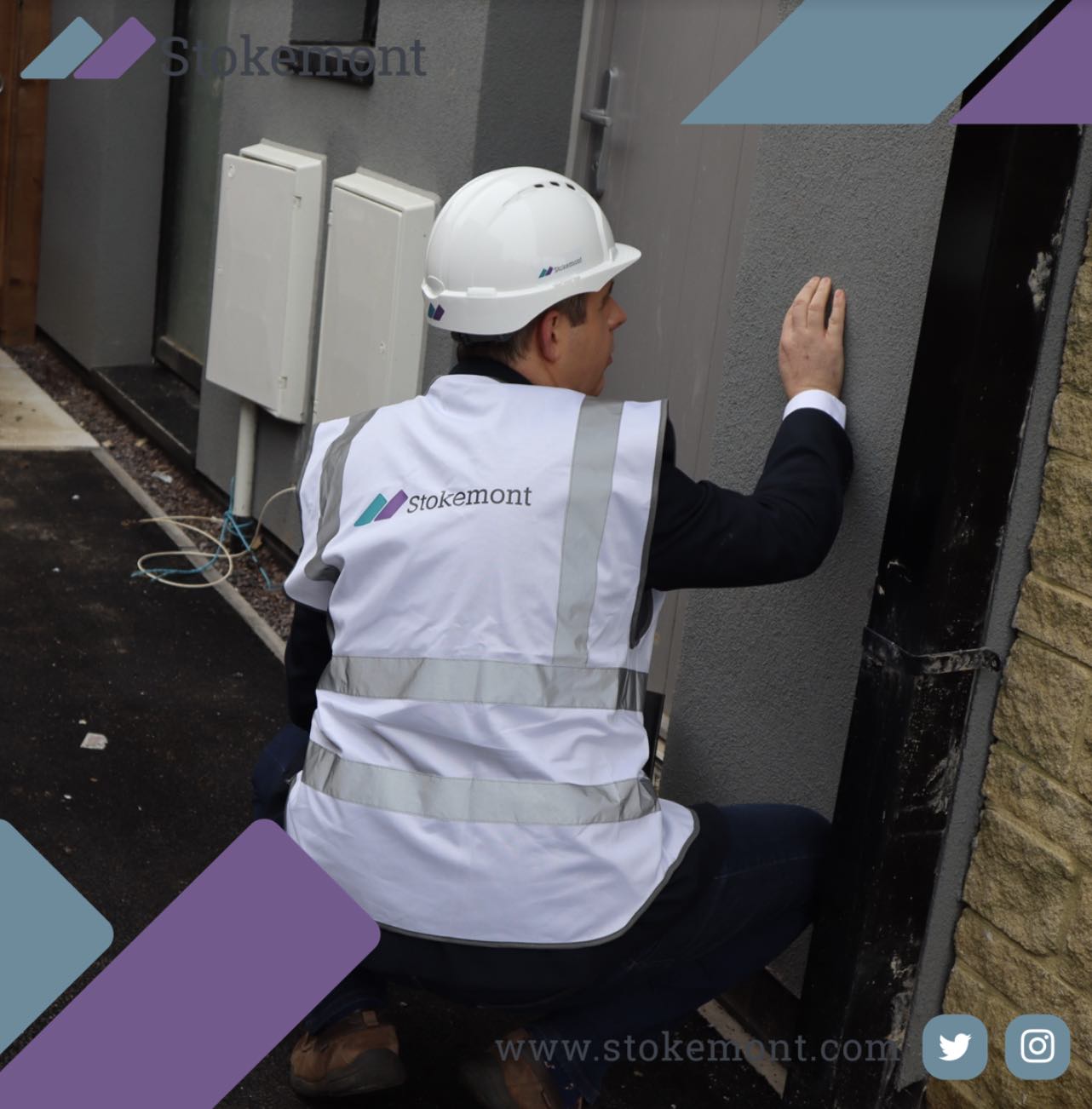Thank you for clicking on today’s informative Property Surveying blog post.
Through our blog posts, we aim to tackle and address some of the more complicated areas of the surveying works that we undertake here at Stokemont on a daily basis.
The aim of the blogs is to not only inform and advise our clients on the matter being discussed, but also to hopefully make them fully aware of the typical phraseology and terminology that surveyors use on a daily basis.
Schedule of Condition reports are one of the most common forms of surveying service that we undertake here at Stokemont. A Schedule of Condition report is effectively a pre-works record of a neighbouring property, structure, garden, or area of land.
The purpose of the Schedule of Condition report is to ensure that the building owner undertaking the works has a robust record in place prior to their works commencing, with this record being the adjoining/neighbouring property.
The purpose of the Schedule of Condition is to ensure that the property condition is recorded, thereby enabling all parties to be fully aware of any post works damage that has been caused. Ultimately putting them in a position where they are able to determine if that damage is new, or was existing prior to the works taking place.
We are going to take a look at some of the standard phraseology terminology that will be used throughout the Schedule of Condition report in an effort to help fully advise you on the report’s content.
Hairline Crack
A hairline crack is a crack that is less than 1mm in width.
The crack will be so minor, that it only just breaks the surface of the plaster.
Hairline cracks are incredibly common within all different types of properties, and it is not uncommon for the Schedule of Condition report to reference and pinpoint multiple different hairline cracks throughout the property.
Crazing
Crazing is similar to hairline cracking, the only difference being that it does not have a set direction in which it progresses.
Instead, it will be covering a wide area of space in a crazed fashion.
Crazing tends to be typical on your older plaster finishes whereby the plaster has slowly de-bonded from the wall itself and lost its key over time.
De-bonding
De-bonding is another common phrase that is used within a Schedule of Condition report.
De-bonding tends to refer to plastered and papered wall finishes whereby wallpaper has been applied directly to the wall itself.
It is not uncommon for wallpaper to pull away from the wall over time as the wallpaper glue/adhesive wears away.
This will naturally result in a de-bonding effect to the paper and is another common issue that a Schedule of Condition report will pinpoint and flag up.
Rucking
Rucking is another typical issue that our surveyors are likely to find during Schedule of Condition reports.
Rucking refers to the situation whereby an area of fabric, paper, or other covering has pulled away from the wall giving a creased or undulated effect.
Rucking is typically found within roof voids/loft voids to sarking or roofing felt.
Out of Verticality
Another typical phrase that surveyors will use through the course of undertaking a Schedule of Condition report is out of verticality.
This will often be reserved for walls, and typically garden walls.
Out of verticality effectively means that there is a noticeable lean to the wall whereby it is not vertical and has suffered some form of movement or issue over the course of its life.
Popped Nail/Screw Heads
Another typical and very common referral that surveyors will make during the course of a Schedule of Condition report is popped nail or popped screw heads.
These tend to be visible on ceilings and occur when the fixture, whether that be a nail or a screw, has pulled away from the ceiling joist above resulting in a popping to the perimeter of the screw or nail’s head.
It is common to see these types of issues at the junction of one plasterboard to another.
Marking Out of Paint
Marking out of the paint is another typical issue, it effectively means that there is a visible difference in the finish of the paintwork to whatever area is being inspected.
This can typically occur when a wall is part painted, and not painted in one sitting with the entire surface being prepped and painted at that time.
Marking out will be a visible difference/distinction between paint finishes on the wall leaving a noticeable aesthetic.
Sound and Level Underfoot
Another typical phrase is sound and level underfoot. Sound and level underfoot is used to set out the level of the floor that the surveyor will be inspecting.
If indeed this phrase is used, it means that the floor isn’t creaking as the surveyor walks on it and tests it.
Creaking Underfoot
As per above, this phrase will be used by the surveyor to describe the floor surface.
If indeed the terminology creaking underfoot is referenced, it will often mean that the surveyor has noted creaking floorboards.
The surveyor will often go on a step further to set out the area and proximity of the squeaking floorboards within the vicinity of the room being inspected.
Delamination
Delamination tends to be referenced on roof coverings. It will effectively set out that the roof tiles or surfaces have a noticeable chipping/delamination to them.
Delamination occurs to older roof coverings and is often a sign that the roof covering is reaching, or has reached the end of its useful life.
Schedule of Condition reports can often be concerning to read, as the average home owner will be completely unaware of the level of defect that the surveyor has noted during their inspection.
It is always worth noting that Schedule of Condition reports will read a lot worse than the situation actually is.
It is also worth noting that even the newest of properties, such as a new build, is going to have a significant level of defect and issue that a good surveyor will be able to locate during the course of their inspection.
Schedule of Condition reports will often be accompanied by a full in-depth photographs, albeit this is often held on file by the surveyor.
The premise of a good Schedule of Condition is that it will simply explain what the defect is, set out its location thereby enabling all parties to fully understand what to look for post construction work.
Here at Stokemont, we are very proud to not only offer Schedule of Condition reports to our own clients. We are also able to offer them to building surveying firms, architects, engineers and contractors via our subsidiary company SOC Direct.
SOC Direct offers Schedule of Conditions at trade prices to these companies in a cost and time effective manner. Whether it is a Schedule of Condition report through Stokemont, or a Schedule of Condition report via SOC Direct. Our surveyors are on upwards of 5-6 Schedule of Condition reports each and every day.
This not only keeps us incredibly busy, but also means that we have got an excellent insight into the typical defects and issues that arise within Schedule of Condition reports and property inspections.
If you would like to discuss your surveying matter with our team of qualified and experienced RICS building surveyors, please feel free to give us a call today and we would be more than happy to assist and advise you.



